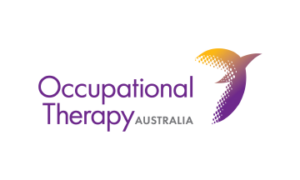The Astronaut Training Program® is sensory support tool designed to provide clear information to the vestibular system (the sensory system that provides us with information about movement and space). The astronaut program can support improved hand-eye coordination, balance and spatial awareness.

Does your child struggle with:
- Poor Concentration
- Inability to pay attention
- A lack of coordination
- Poor gross- and/or fine motor skills
- Poor organisation
- Erratic behaviour
- Mood swings
- Motion sickness
Or, does your child have:
- An unusual fear of motion or changes of space (swings/being up high)
- An unusual preference for fast moving or risky activities
- An under-developed mid-line
- Uncertainty over using their left or right hand
Your child could have an inefficient vestibular system, and this is a system that your child needs for learning.
What is the Vestibular system?
The vestibular system is your child’s movement and sense of position. It is located in the inner ear.
For example, if your child spins around a few times and then stops, they may feel dizzy. This is because the fluid in their vestibular system spins around, and gives their brain information that they are still spinning.
This system impact on emotions, muscle tone, how alert you are and vital organs. Understanding how your child’s vestibular system works could be the key to supporting your child’s learning and behaviour.
How it works
The vestibular system forms your child’s ‘anchor’. It tells them where they are in relation to the rest of the world. It gives them information about how their body is moving. Is it moving forward, backward, sideways or spinning? It also tells them what position they are in – standing up, lying down, jumping or falling.
Your child gets this information when they move their head: either out of the upright or when they start to spin around. Head movements cause the fluid in your child’s vestibular system to move, and therefore activates the system to give your child sensory information.
The vestibular system is a ‘use it or lose it’ system. As a child, you might have loved to ride roller-coasters, spin around or jump high on the trampoline. Unfortunately, as an adult, you might now be overly sensitive to this movement and it may cause you to become excessively dizzy or feel sick. Primarily, this is because, as adults, we spend most of our time in an upright position, so our vestibular system is not activated as much as when we were children jumping, spinning and rolling.
As paediatric occupational therapists, we are constantly jumping, rolling and spinning with our playful pint-sized clients, so even though we’re adults, we haven’t ‘lost’ this skill.
What does this mean for your child’s learning?
Academically, children who struggle with their vestibular, visual and auditory systems may experience difficulty with:
- Reading
- Spelling
- Handwriting
- Mathematics
The Astronaut Program
This is a fun program that can be integrated at home. It uses sound, movement and eye exercises to help children to improve the integration of their Auditory (sound), Vestibular (movement and position) and Visual systems.
These three systems work together in your child’s body and perform many important tasks. Together they help kids feel comfortable in the space that surrounds them.
MoveAbout Occupational Therapists experienced in Astronaut Training can teach caregivers to complete this home-based program. The Astronaut Training soundtrack provides guidance in the correct provision (position, direction, timing) of the program in a way that is fun and exciting, through the use of the Astronaut Training theme.
For more information, visit the Astronaut Program®.
GET IN TOUCH

